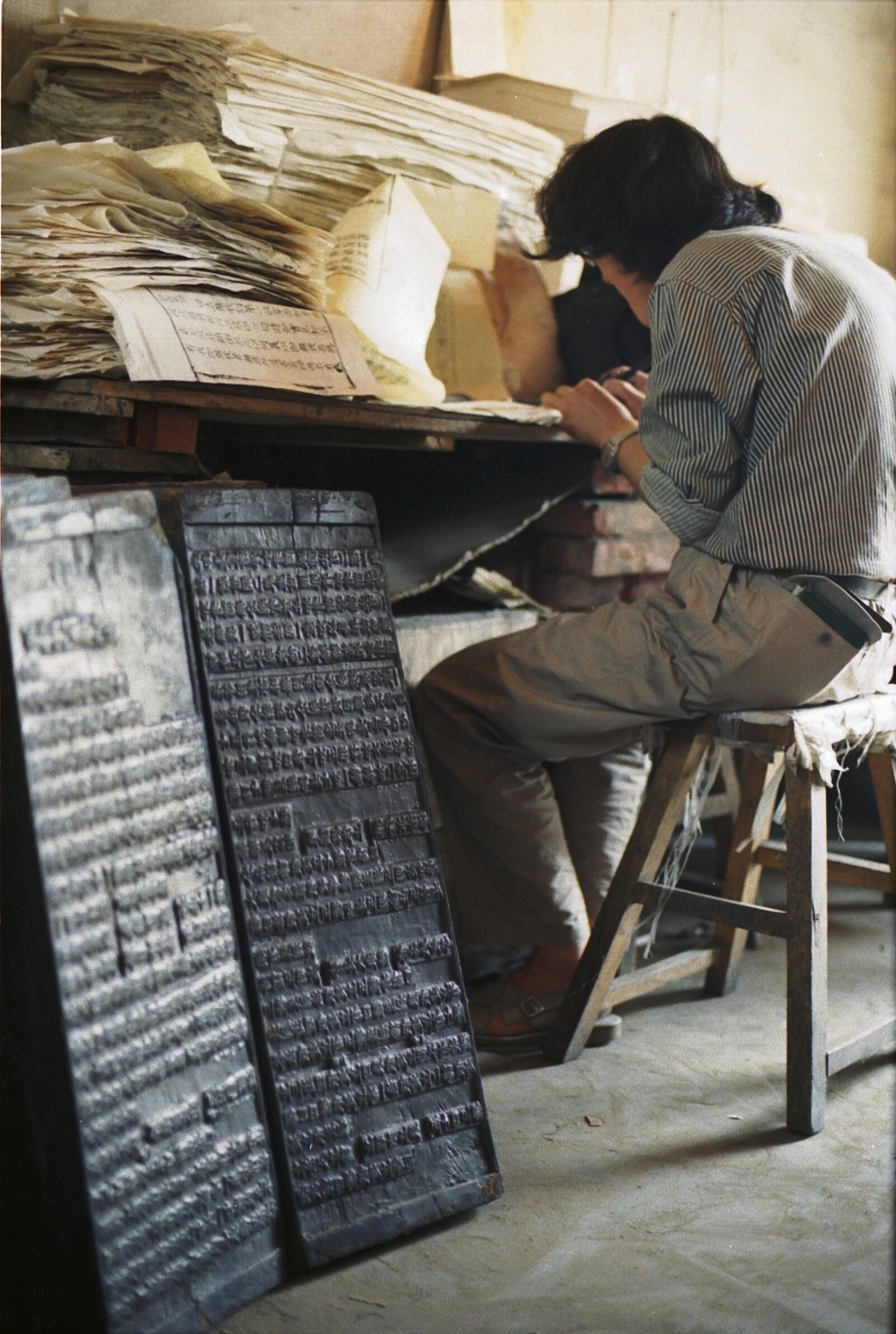July 21–October 18, 2018
798 Art District
No. 4 Jiuxianqiao Road, Chaoyang District
100015 Beijing
China
Hours: Monday–Sunday 10am–7pm
T +86 10 5780 0200
From July 21 to October 18, UCCA presents Xu Bing: Thought and Method, spanning the Central Gallery, Nave, Lobby, and the Great Hall, newly restored to its original 1800-square-meter dimensions. This exhibition brings together more than sixty works from all phases of Xu Bing’s career, the most comprehensive exploration of his thinking and making ever presented in Beijing, the city he calls home.
The art of Xu Bing (b. 1955) nurtures a fundamental contradiction: the artist’s critical thinking on the state of the world in which he finds himself versus the diverse, meticulous methods by which that thinking is expressed. His work is neither strictly conceptual, turning on single ideas, nor rigidly retinal, seeking formal perfection. Xu Bing is something else: an artist whose work gives shape to ideas, and whose ideas are shaped by the changing world he inhabits. As he has said, “Wherever there are people, there are questions. And wherever there are questions, there is art.”
Xu was forged into a visual worker by his intellectual and political upbringing in Beijing and the surrounding countryside. Striving to find artistic truth, he entered the Central Academy of Fine Arts in 1977, becoming a brilliant technician and aesthetician of his chosen medium of printmaking, creating works like Shattered Jade (1977–83), a virtuosic take on the rustic sights surrounding him. After graduating, he made a name for himself as a maverick amidst China’s daring avant-garde movement, pushing the limits of woodblock art with Five Series of Repetitions (1986–87), which records the birth and obliteration of an image; and designing, hand-carving, and printing—in painstaking, movable type—four thousand nonsense characters for his magisterial Book from the Sky (1987–91). Finished, this artwork drew heated responses from Beijing’s artists and intellectuals, who denounced Xu for liberal heresy, or academic stuffiness, yet pored over the work, looking for a single, real character; today, their obsessive search seems to represent the larger suspicion, prevailing at the dawn of post-reform China, that old and cherished signifiers had suddenly lost their meanings.
In the early 1990s, Xu immigrated to New York, and became a key figure, witty and trenchant, in an emerging discourse of global contemporary art. Ghosts Pounding the Wall (1990–91), begun in China and finished in America, speaks to the ironies of translation and migration; an ink rubbing of the Great Wall done on tremendous reams of paper, it both eulogizes, and problematizes, an imaginary fatherland. Successive artworks, like American Silkworm Series (1994–98) and Post Testament (1992–93), evince the joys and frustrations of émigré life, and the bewildering moments of transcultural contact. These explorations culminated in Xu’s trademark “Square Word Calligraphy” (1994-present), a hybrid writing system wherein the English alphabet has been reorganized according to the structural logic of hanzi.
Returning to China and to his alma mater in 2007, Xu committed himself to renewing the institutions that shaped his own outlook, his creative concerns shifting towards the economic and geopolitical. “Tobacco Project” (1999–2011) tracks the movements of international capital during the 20th century, connecting North Carolina and Shanghai, American cigarettes and Chinese markets; while Book from the Ground (2003–14) examines the possibility of an “intrinsic order” underlying human communication. Phoenix (2008–13) comments on China’s breakneck development, while Dragonfly Eyes (2017) dramatizes the role of individuals in ever-expanding surveillance networks.
Xu Bing produces artworks that balance intricate expression with a deep suspicion that things are not what they seem. They emerge as complex, myriad forms, but never forget the arbitrariness of their genesis. They seek to provide deft answers to knotty problems, but also to raise new, insightful questions. This artist’s thought and method are unmistakable, just as his name has become a metonym for Chinese contemporary art.
The exhibition is curated by UCCA Director Philip Tinari and independent curator Feng Boyi. The exhibition has been made possible with the generous support of Rolex; Xu served as an Advisor in the Rolex Mentor and Protégé Arts Initiative.


